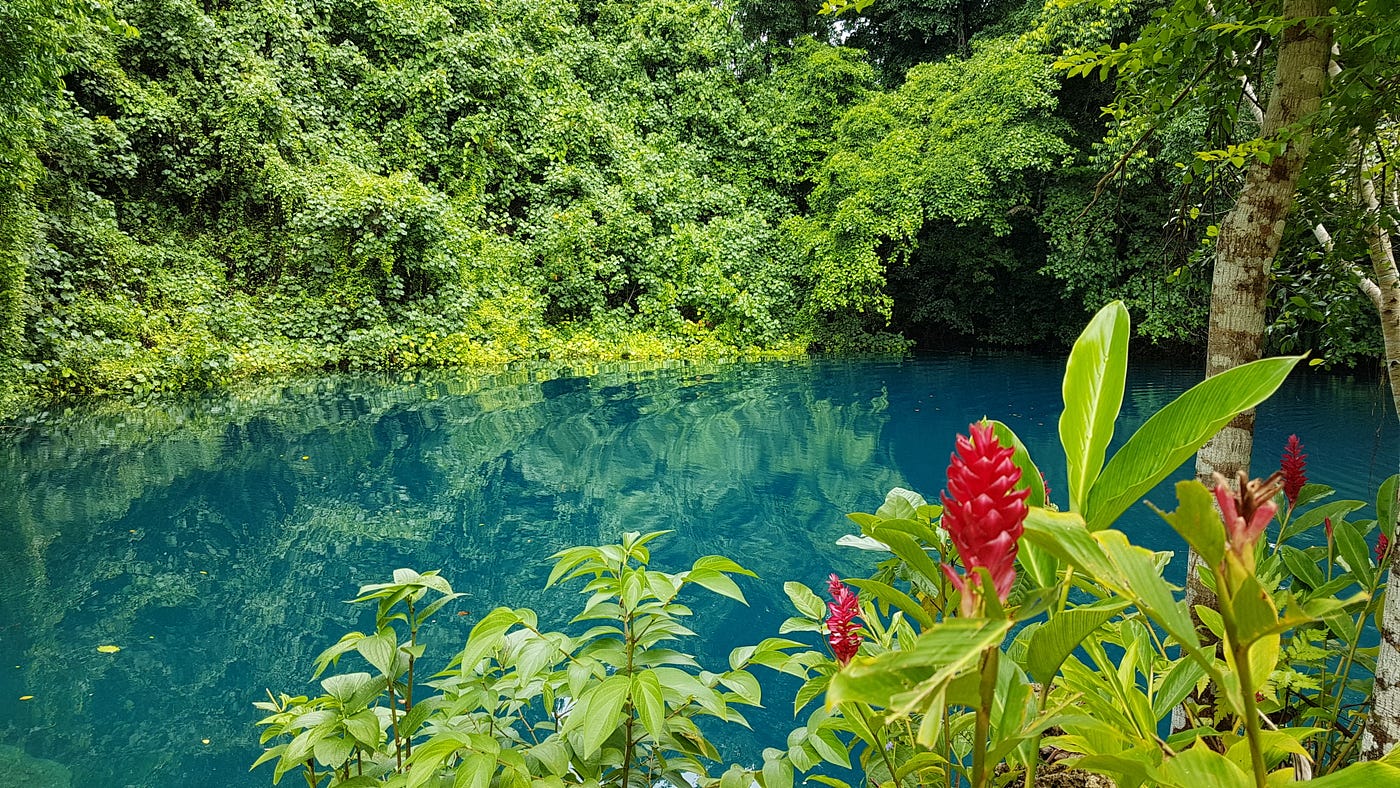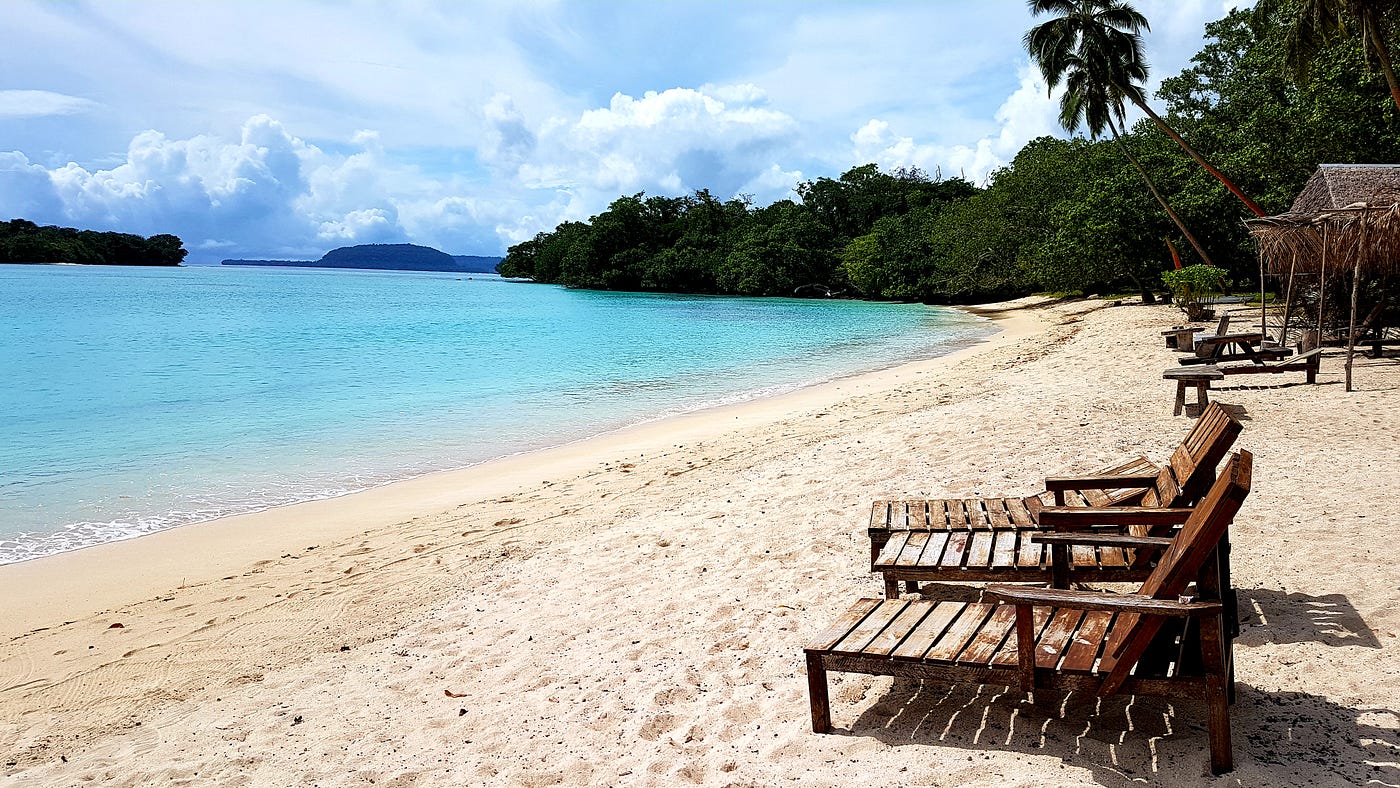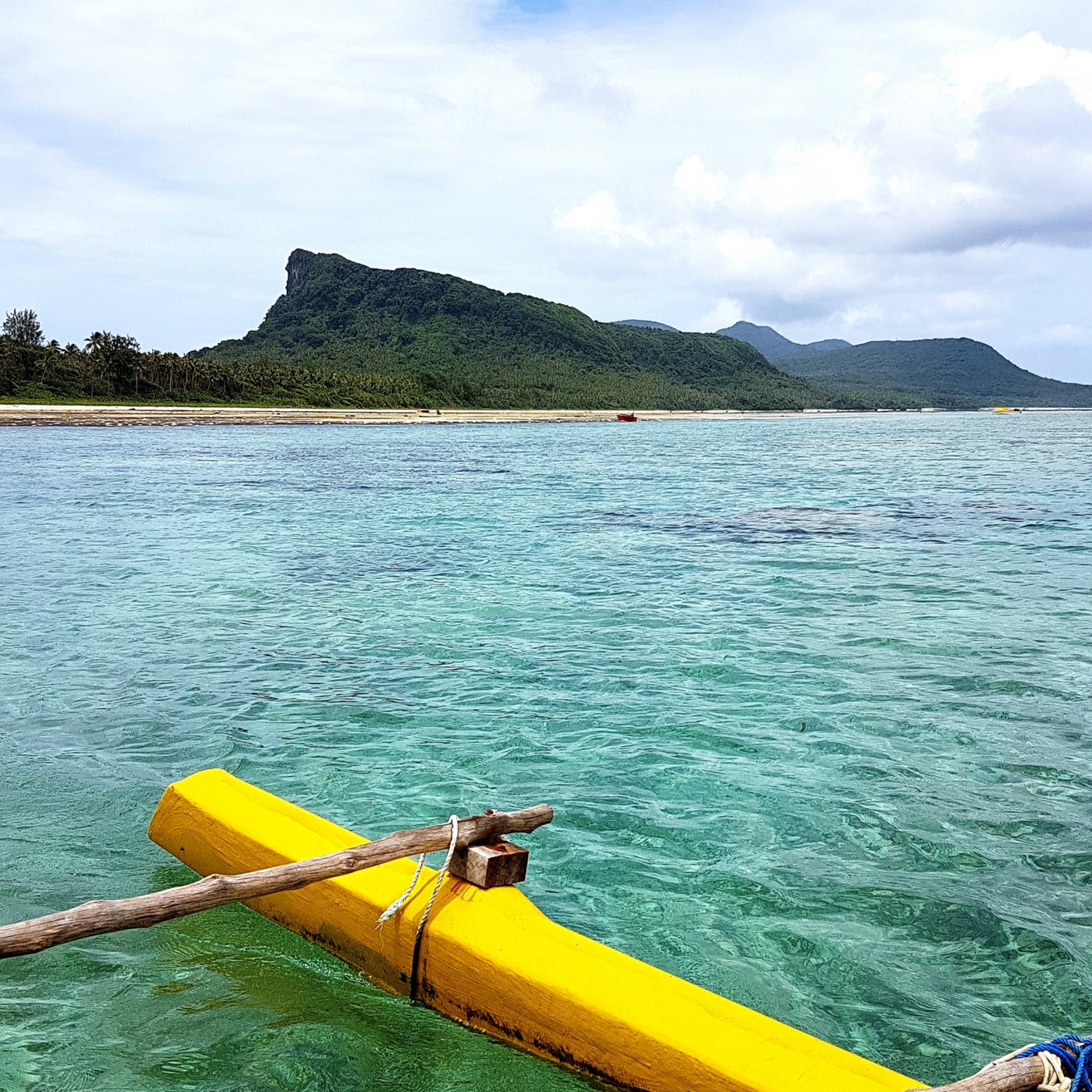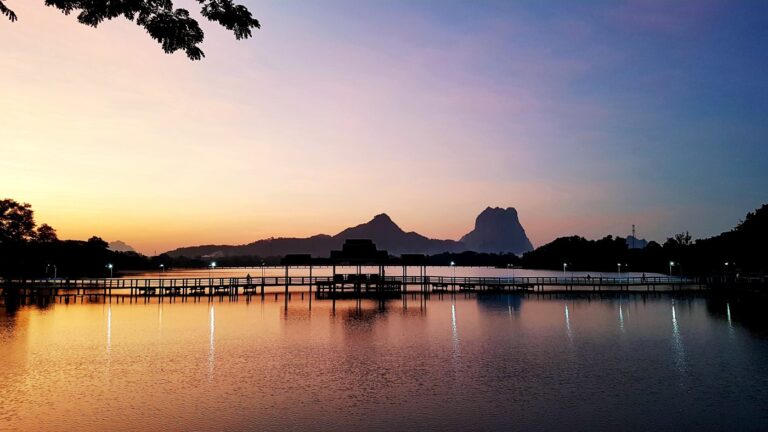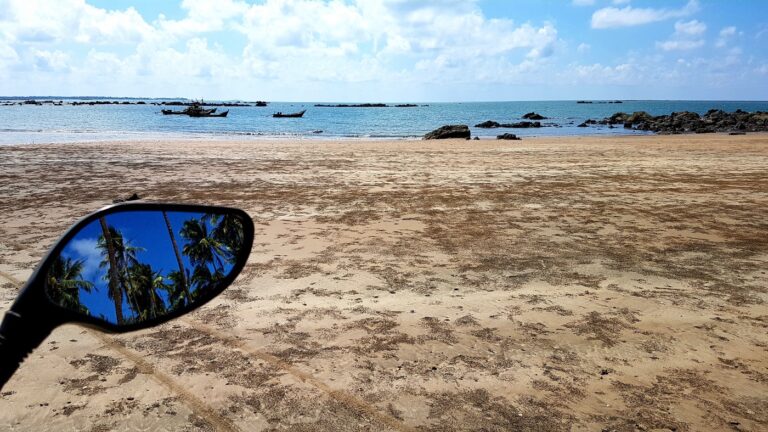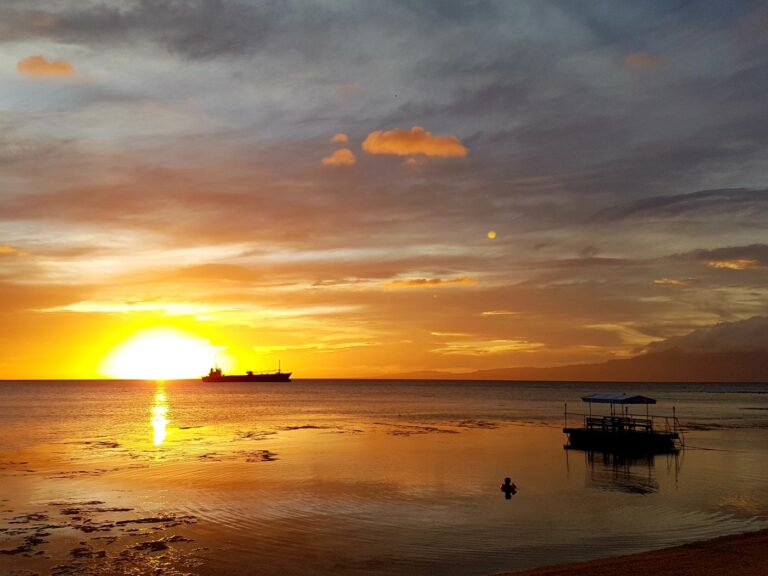(originally posted on Medium on Mar 26, 2020)
Impressions from three weeks on three islands
Vanuatu is an island paradise off the coast of Australia. Few people know about its existence, and even fewer try to go there as backpacker. Vanuatu appears to mostly cater to tourists with large pockets. Honeymoon couples, or rich Australians who wanted to do something differently this year — or weekend. The largest quantity of tourists drop by on a cruise ship which anchors for a day or two max.
Ni-vans (or Ni-Vanuatu, the name they designate themselves with) were always very surprised to hear that someone would stay for more than a week in the country. And consequentially a lot of the tourist attractions are designed in a way to do them in a rushed day. despite the laid back culture, slow travel is not really a concept that has reached Vanuatu yet.
Vanuatu is nonetheless a good destination for a longer stay. This island paradise shows off with a lot of beautiful landscapes; above the water and underwater. And then there is the ni-van culture, which contributes further to a feeling of indeed being far from home.
Our itinerary
We have spent a total of 21 days in Vanuatu. Of those three weeks we’ve spend an equal 7 days on the islands Efate (Port Vila), Espiritu Santo, and Mota Lava.
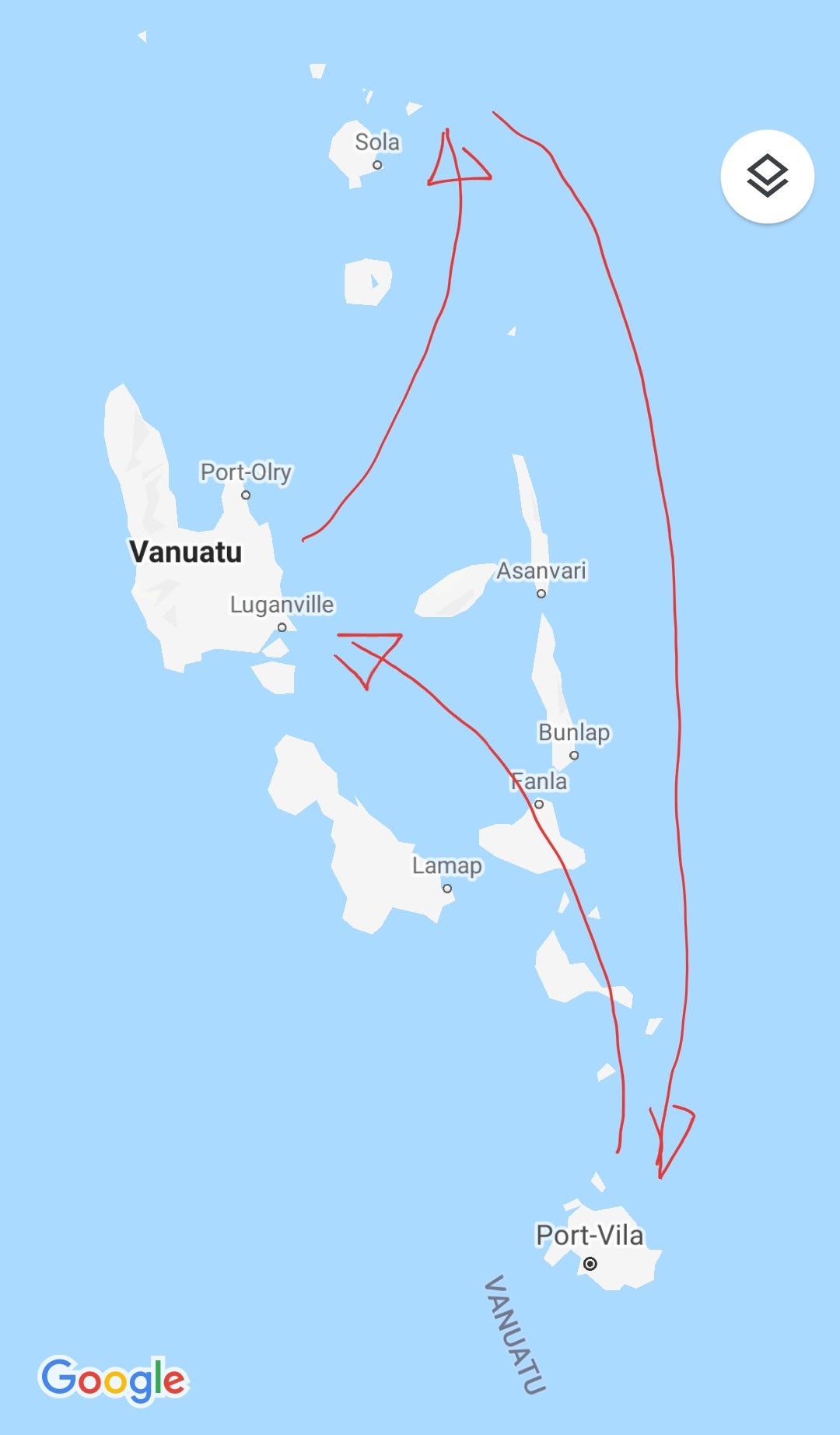
We started our journey in Port Vila for two days. From there we moved for three days to Mele beach, next to Hideaway island. After that, we took a flight to Santo where we moved immediately to Lonnoc beach in the north. After three days, we went further north to Port Olry for one day.
On our way down south from Port Olry to Luganville we stopped at the three main blue holes (Nanda, Matevulu, Riri). In Luganville we spent the remaining two and a half days. Here, we went on a dive on the SS President Coolidge, and were very lucky to see a dugong.
From Santo we took a flight to Mota Lava, where we have resided 7 days on Rah island. During this time a cyclone crossed the country. And while the north didn’t experience particularly strong winds, it was raining on several days. The days after the rain were beautiful though.
The plane from Mota Lava stopped in Vanua Lava for fuel, in Torres for passengers, and in Santo as target. From there we had a connection back to Vila, where we’ve spent our last two days.
Highlights seen on our itinerary
Mele beach
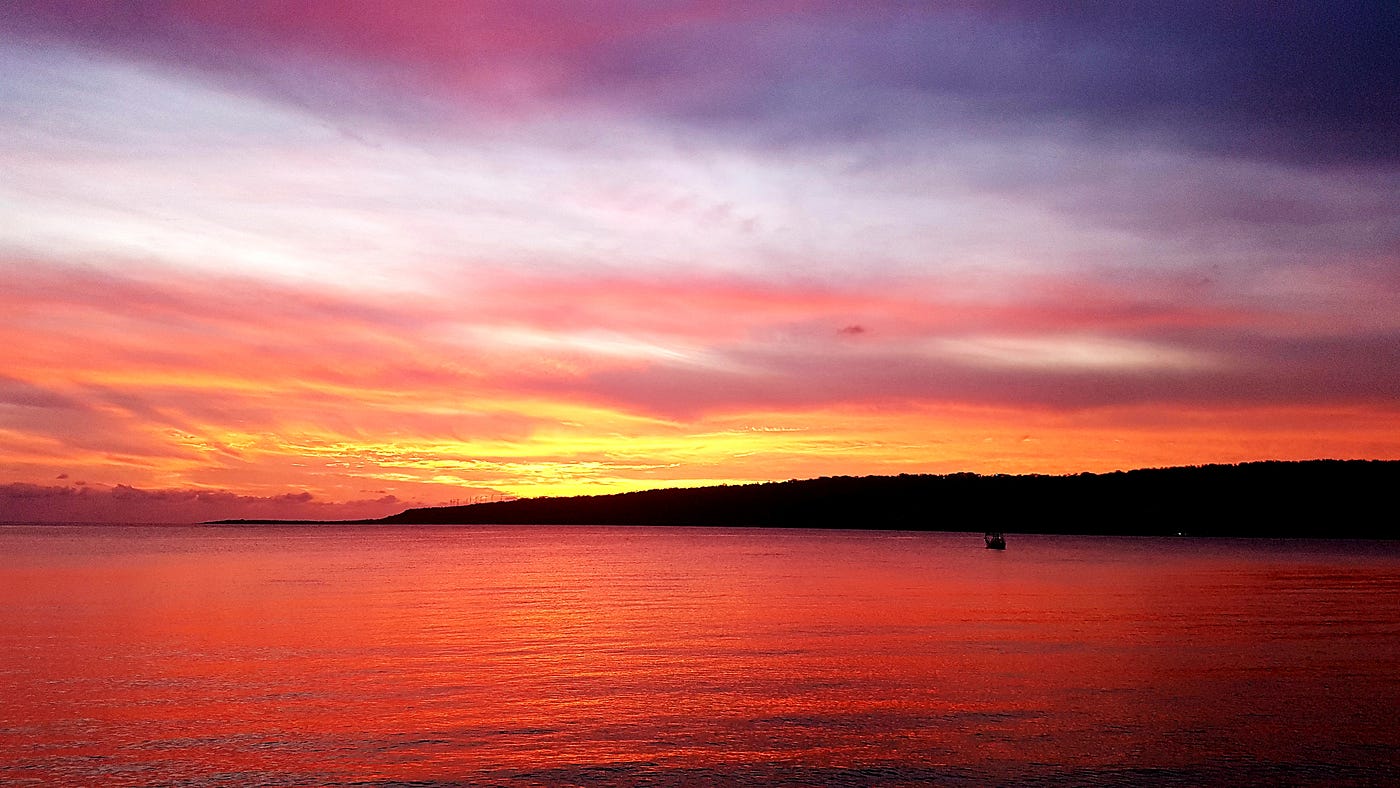

Hideaway underwater post office

Entrance fee to Hideaway island: 1250Vt per person.
Champagne beach snorkeling
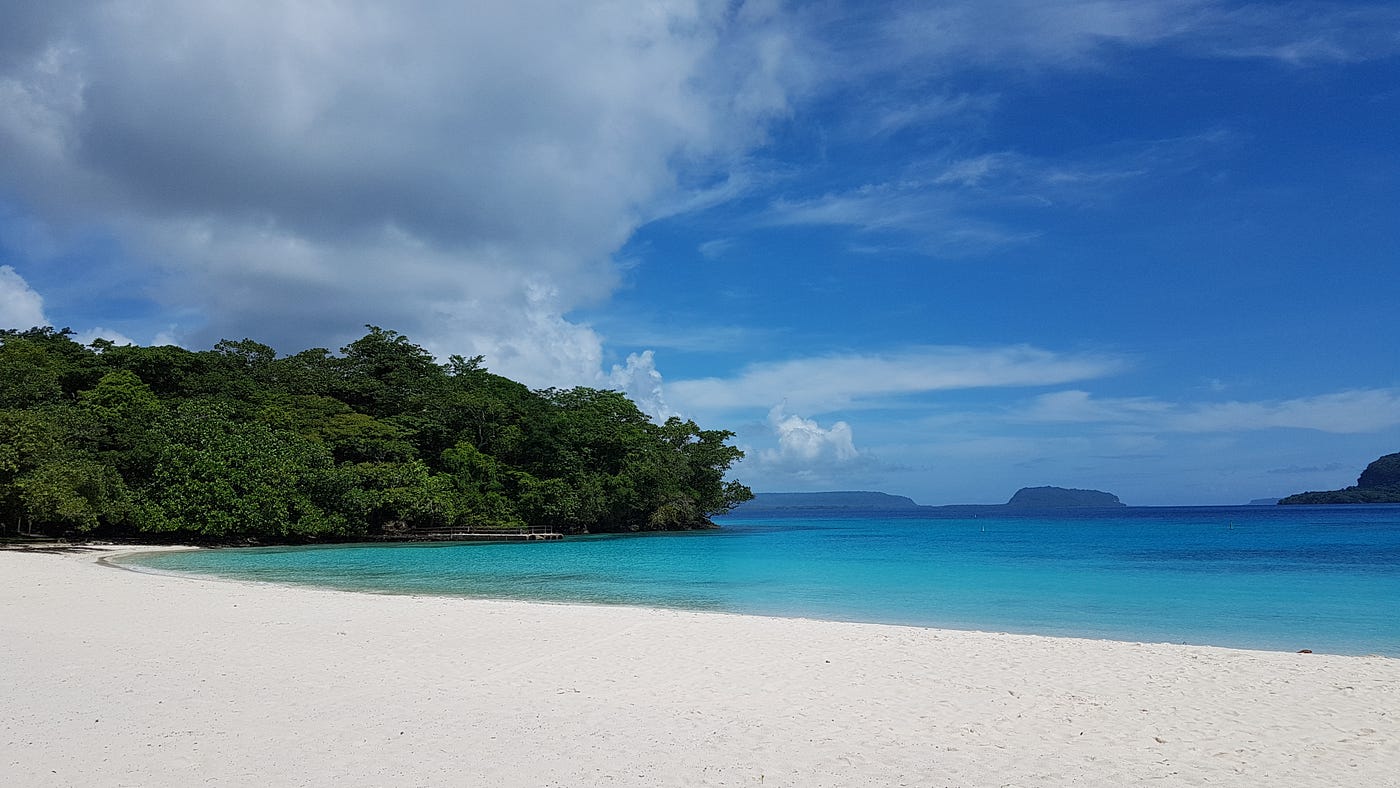
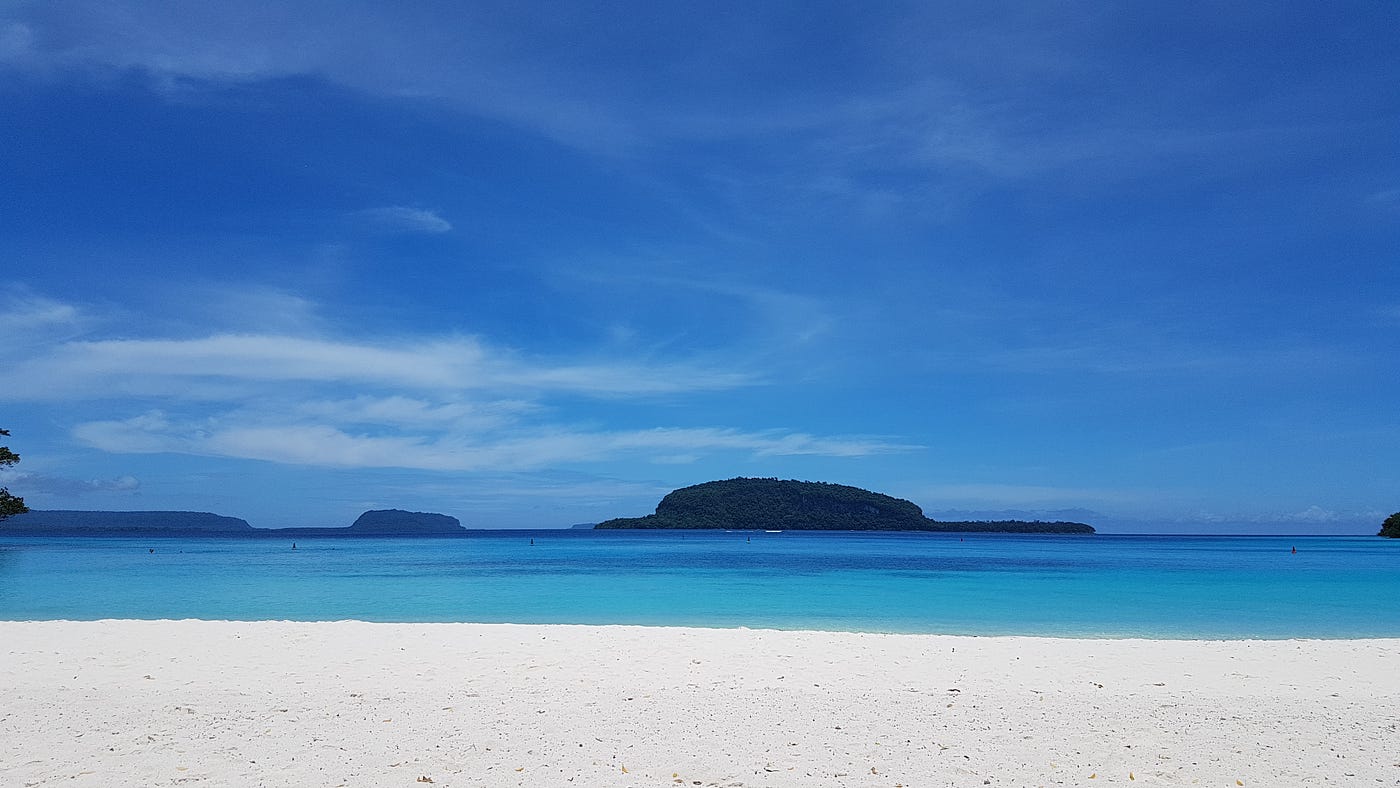
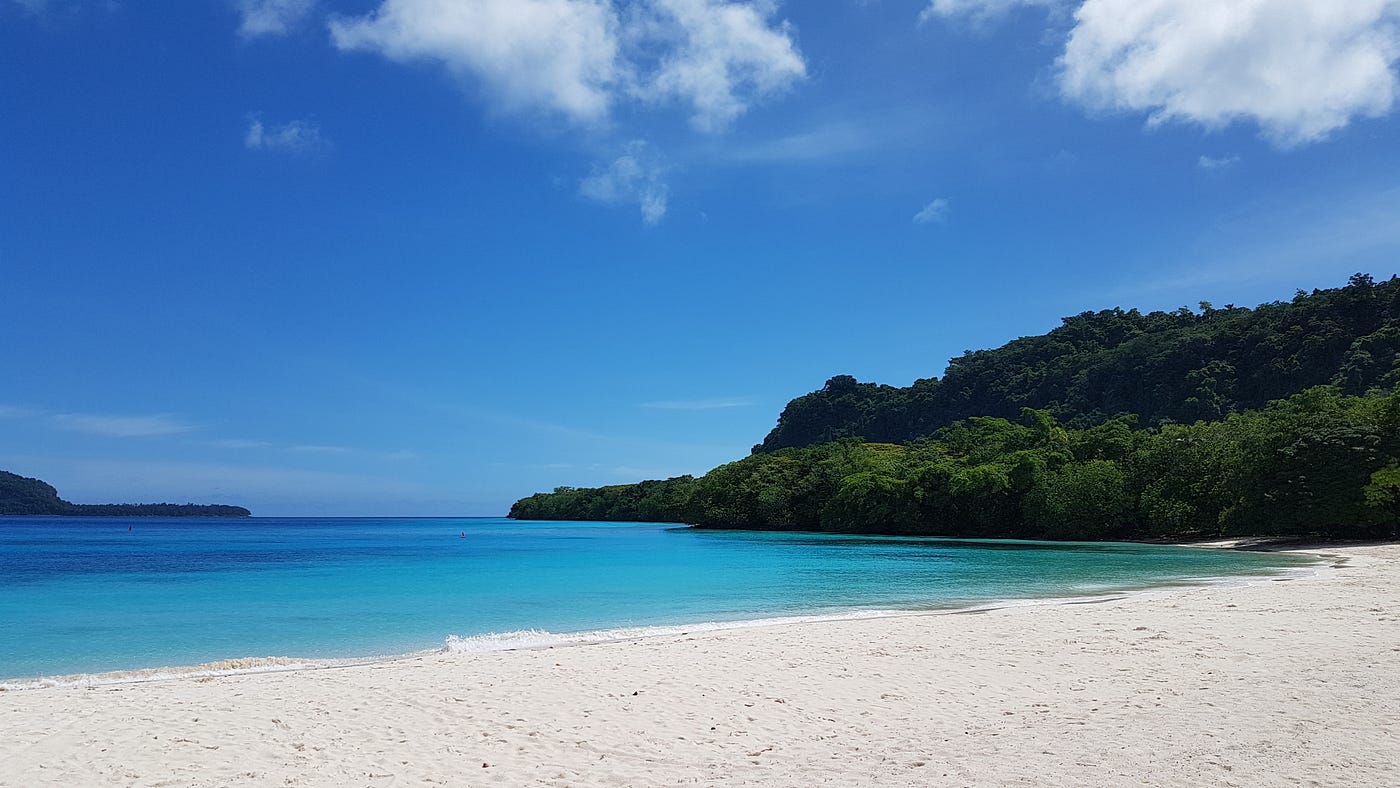

Entrance fee: 500Vt per person when walking in, otherwise 2000Vt per car
Port Olry

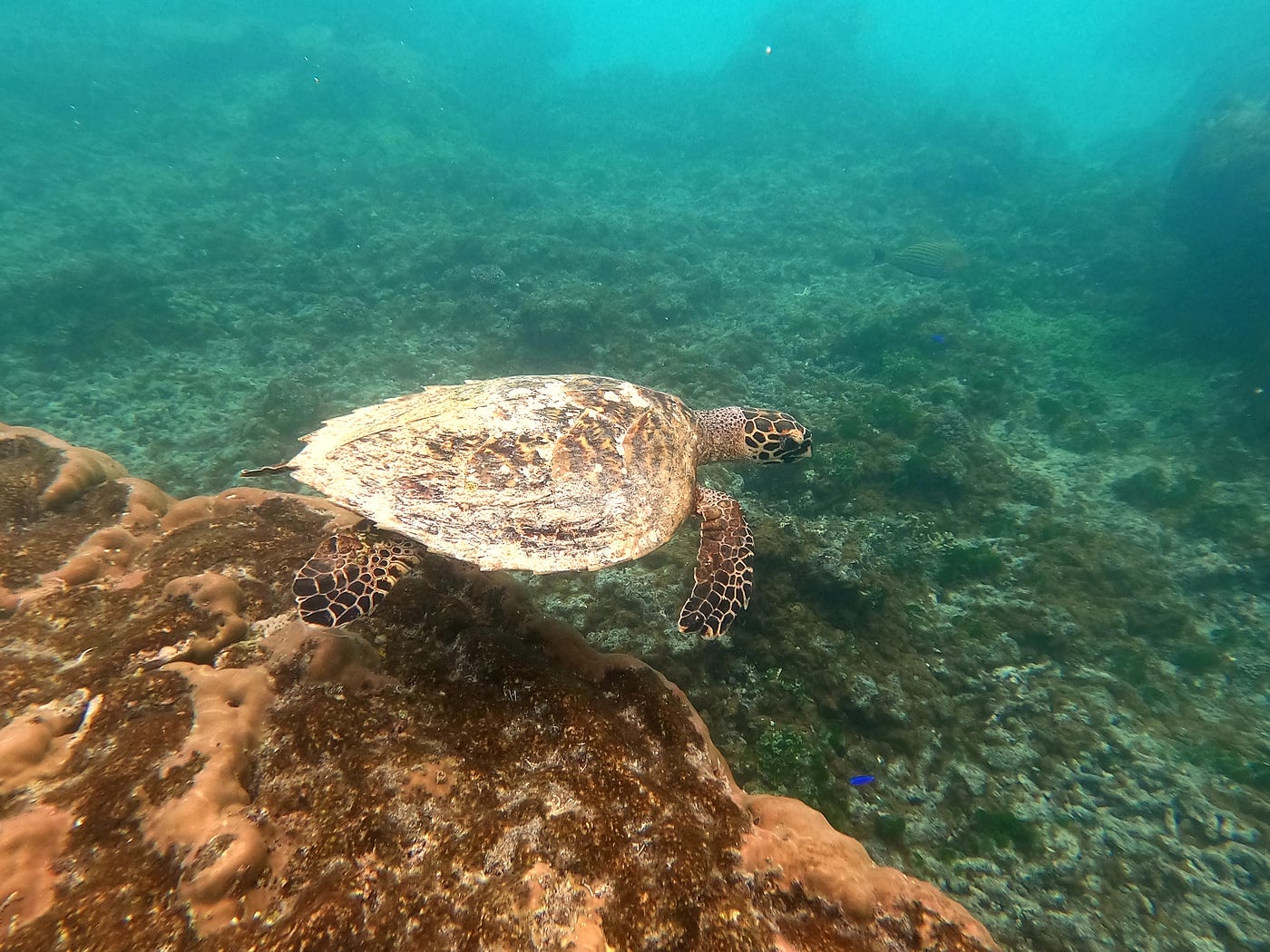
Blue holes on Santo



SS President Coolidge
Back during WWII, the US was stationed in Vanuatu. To secure the harbor around Luganville, they put a bunch of mines in the water. One day, the SS President Coolidge — a former luxury passenger boat, repurposed to transport US troops — was supposed to land in Luganville.
The local troops informed the Coolidge to get in between A and B, but didn’t mention the mines; spies could be listening in after all.

The captain read the telegraph, shook his head — these guys clearly don’t realize how big this vessel is! — and decided to take a different route. When the first mine hit, the captain better understood the earlier instructions. But it was too late.
The ship could save itself to the shore, where about 5000 troops were able to get off more or less unharmed; apparently there were only two casualties. Eventually the Coolidge sank just off the shore. This allows contemporary visitors to dive there from the shore, no boat required.
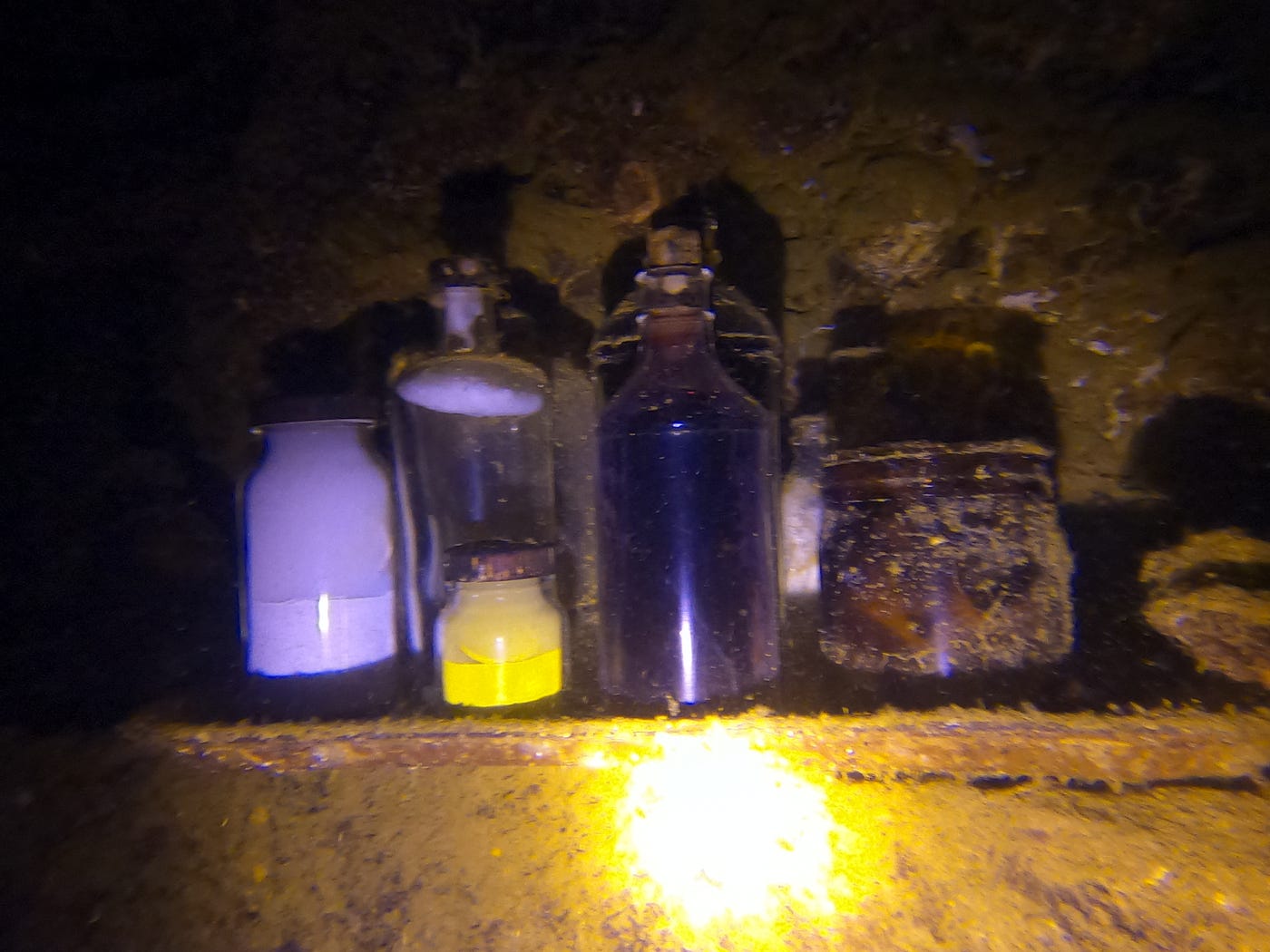


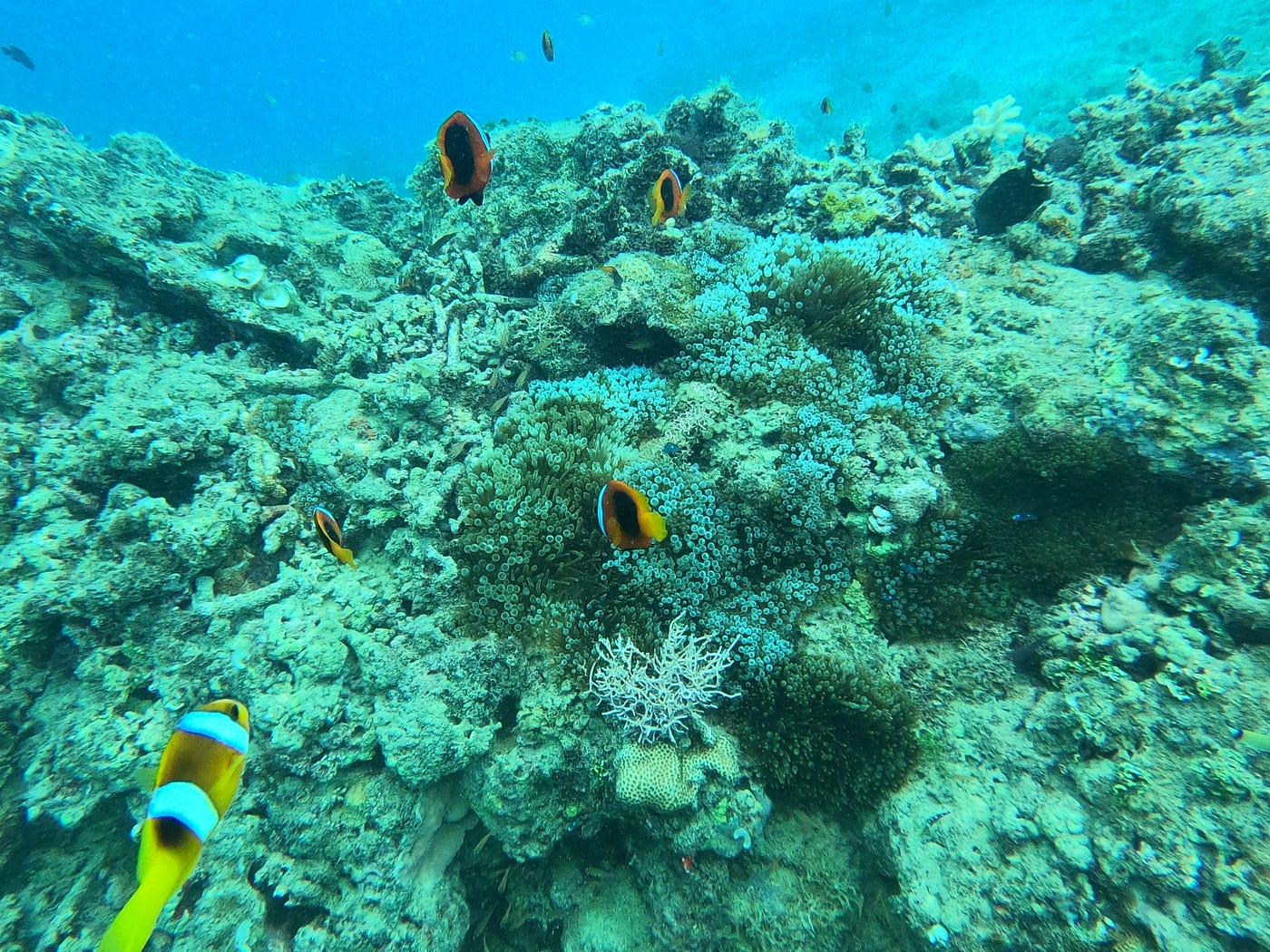
Rah island
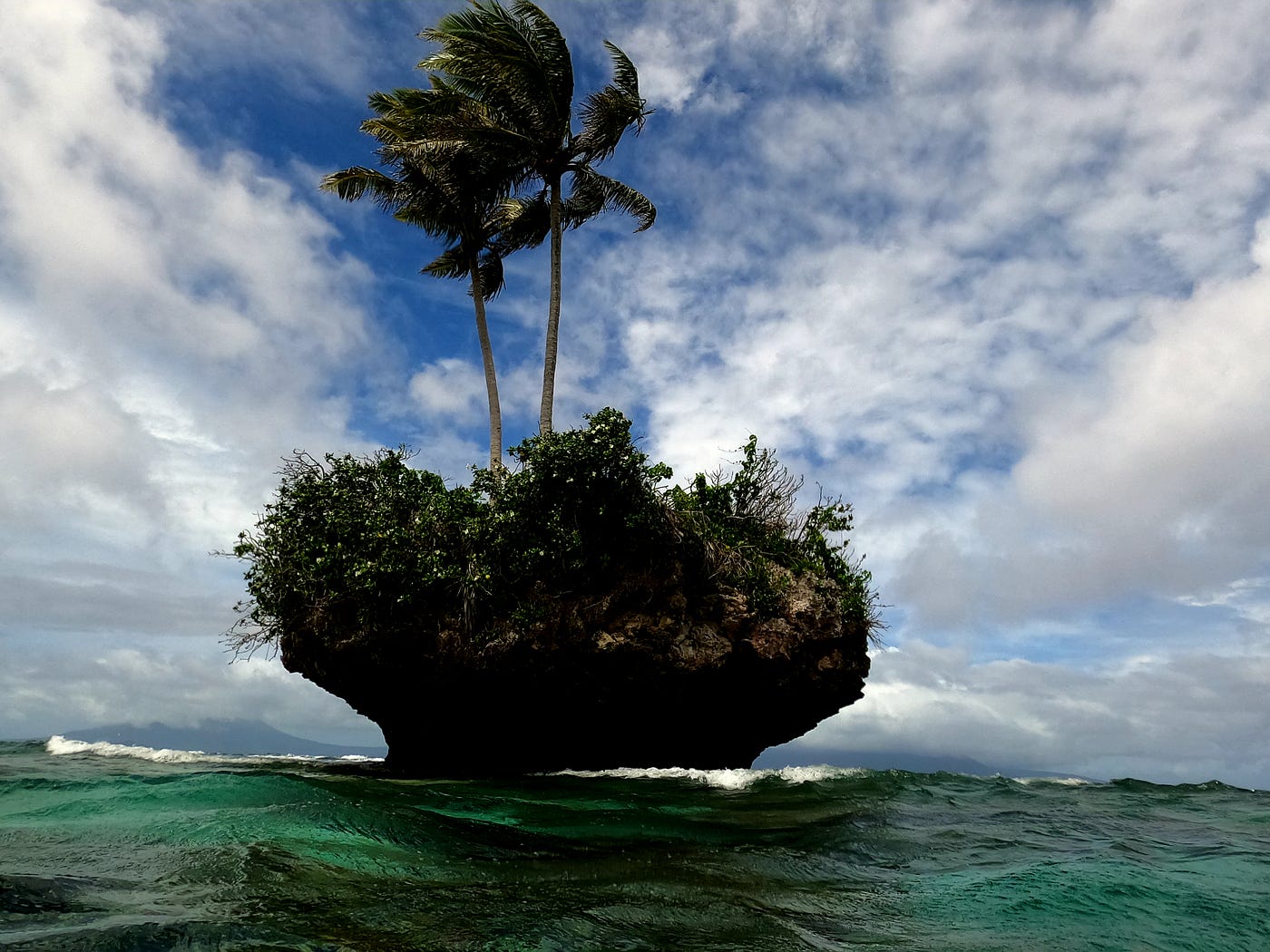


The travel experience and the prices
Vanuatu is expensive. So much so that prices are a likely early topic when talking with other travelers. Yet, the prices are more complicated than a binary cheap/expensive. A lot is expensive, but equally so for the locals. And then there are a few items that are incredibly cheap.
First point is food. Vanuatu does not have a street food culture. Locals cook and eat at home. Which means all the restaurants are fancy and serve elaborated dishes; along with the price. And the food they serve is indeed good and absolutely worth the price. It’s just, sometimes a less fancy meal would be enough just as much. And this option we didn’t find.

This being said, it pays off tremendously if one has access to a kitchen. In Port Vila and Luganville we spent a few nights in motels with access to basic kitchen utilities (Pacific Paradise (on booking.com) and Hibiscus (not on booking.com, bookable by email, can be found on Facebook).
In these cities it’s also easy to do grocery shopping. Fruits and vegetables at the local market are very cheap: a large avocado for 100Vt, big grape of bananas for 100Vt, two eggplants for 100Vt, etc. The meat is very cheap as well: a piece of best Vanuatu beef is 1000Vt/kg at the local butcher (in Luganville).
As a side note, a quantity of beef equivalent to a ~2000Vt restaurant meal would cost only about 200Vt if you can cook it yourself; with the added benefits that you’d get a higher end piece than the restaurant serves, and you’d have control over the cooking, in case you’re not a big fan of “well done”
On the other hand, grocery shopping can also get expensive very quickly. You see, Vanuatu is a tax haven with 0% income tax. So then how does the government make the money to run itself? Well, they sell passports for starters. And they put an import tax on anything that comes from outside.
Problem is, apart from fruits, vegetables, and meat there is not much local. In other words, the supermarkets are stocked with mostly Australian and Kiwi products, at Australian (/Kiwi) price plus the import tax. Now that is expensive! But it’s equally expensive for the locals. And their salaries do not go along.
Another explanation for high food prices (in the restaurants), is the fact that “local” food is not necessarily local in the truest sense of the word. The coconut crabs, for example, are home to Vanuatu. Except, they all come from Torres, an island group at the very north of the country. And they’re shipped by plane to the other, more tourist-y islands. Likewise, the Santo beef is local and cheap on Santo, but when it has to get to another island, you again don’t need an import tax to up the prices.
On the flip side, on Mota Lava we were served lobster on a approximately bi-daily basis. Because there, lobster is among the few readily available meat options. Let that sink in: on Mota Lava you’re going to eat lobster, because those they can just grab from the (sea) floor, while beef would be very hard to come by.
To summarize the food prices: find a way to cook yourself, and find the local-local food. This will give you large savings.
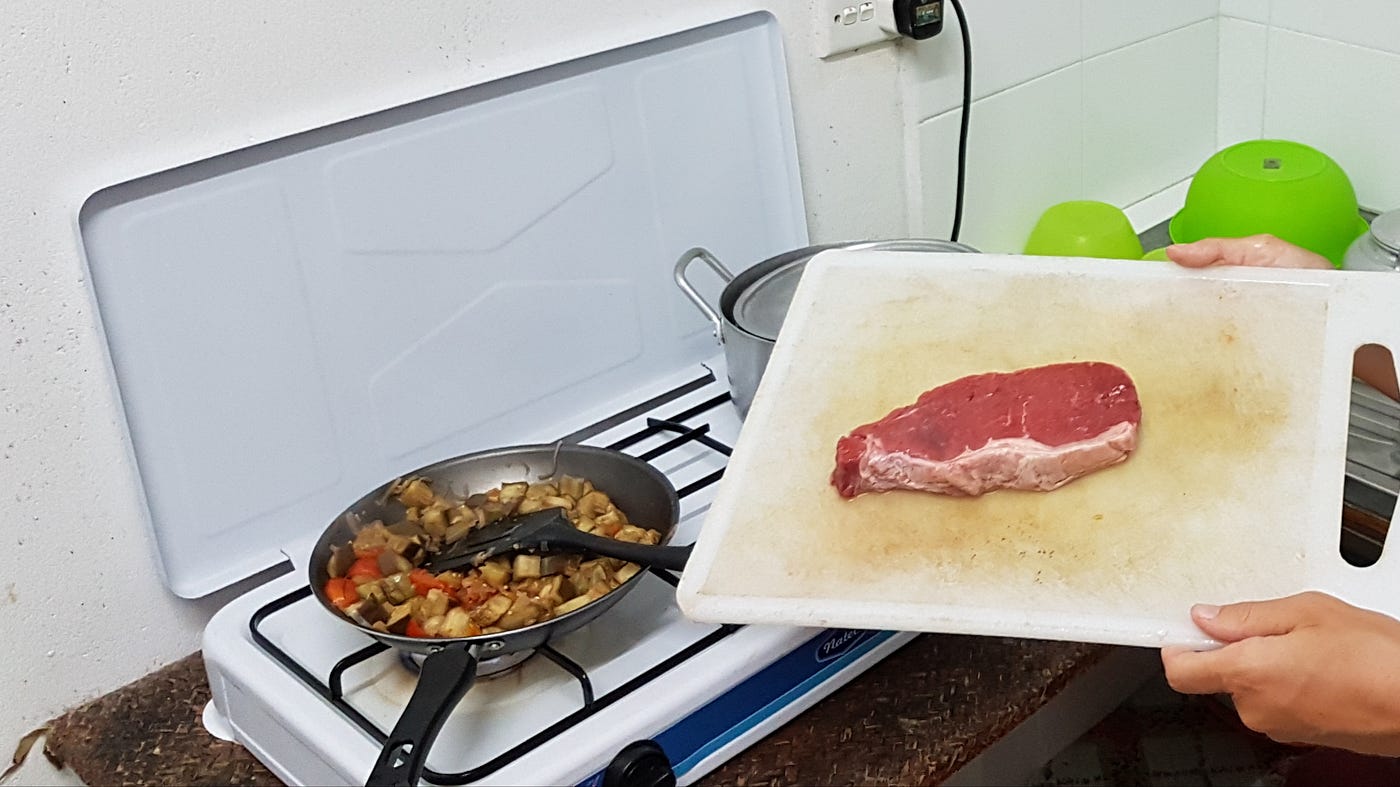
A second point is the mode of travel. A typical backpacking mode through Vanuatu is not possible. There are no dorms, there are no “cheap” versions where there are expensive “luxury” accommodations, and there are no low-cost restaurants (as mentioned above).
At the same time, travel in Vanuatu cannot be described as luxury travel either. There are no real luxury resorts, the expensive places don’t necessarily have warm water — or even running water — nor is electricity a given 24/7. It’s expensive because that’s just what the price is.
To be fair, while the service most of the time doesn’t match what one would expect for the price paid, the locations are pure paradise. In more developed tourist destinations comparable locations would be far, far more expensive (but there it would go find another equilibrium because the amenities are higher class as well…).
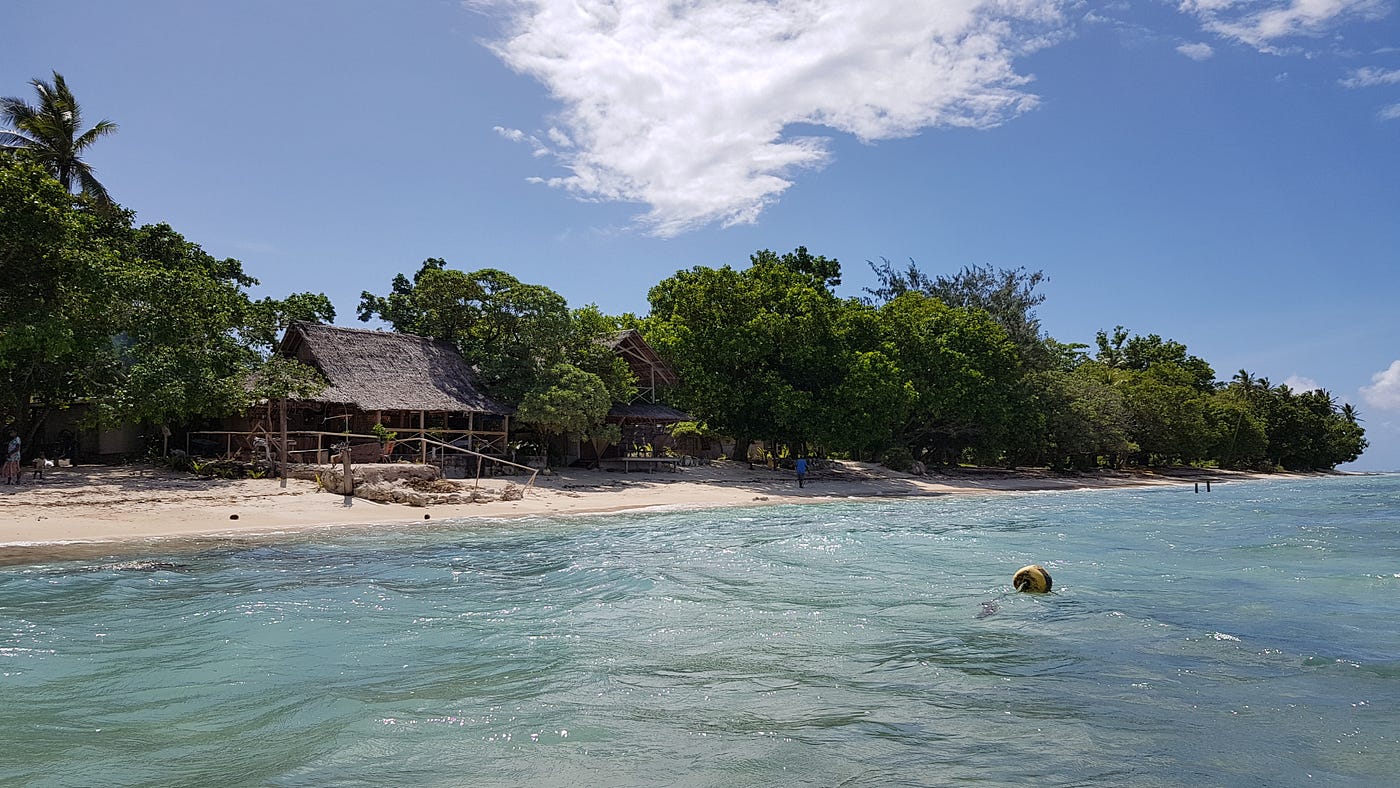
Often the accommodation is in a nice private bungalow, on a deserted beach, all for oneself. And this combination is priceless to an extent not even a Mastercard would be enough in other countries.
Yet, travel in Vanuatu cannot be labeled luxury travel even given the somewhat higher price tags. Those private bungalow? Sometimes there are no electrical outlets to charge ones devices over night, and only cold water (and only maybe running, so be ready to shower from a bucket).
What is more, the bungalows are owned and run by the family that owns them. You’re part of the family. Except you’re not. You don’t help in the kitchen, you don’t eat with them on the floor behind the hut but at a table under a roof. But you’re not surrounded by employed professionals either; which brings both up- and downsides.
Additionally, often the transport between the places is very much a backpacking experience: sitting in the trunk of the pick up, exposed to rain and mud; definitely not a means of travel you’d want to wear your nice clothes for.

Another point of large expense are the domestic flights. Moving between the islands by boat is not impossible, but the respective cargo boats are scheduled only about every 1-2 month and take about a week on sea. This leaves the plane as only real option.
Flying in the small planes (see below) has its price. You, along with up to about 15 other passengers have to pay for the two pilots, maintenance, fuel, and so on. We have paid 106kVt to fly Vila – Santo – Mota Lava – Vila for two persons. Now, if you’re smart, you’d take Air Vanuatu to get into the country. With an Air Vanuatu entry ticket, they’d give you a 20% discount on the internal flights. In our case that would have been 21kVt, which would have amounted to about $175 USD!

Mind also the fact that locals of course cannot access this Air Vanuatu discount. That’s somewhat unfair. And at the same time that’s an argument for them to justify tourist prices for some of the transports and activities (a 2h hike can easily cost the equivalent of $20 USD per person (and it’s not clear where this money then goes to!)); also if you didn’t benefit from the discount…
Air Vanuatu is the only operator between the islands (due to some alleged corruption, nepotism, etc.). Apart from some charter flights and air taxis. On the bottom line though, Air Vanuatu has zero competition. Which means prices won’t come down any time soon. On the up-side, since the prices don’t move, it doesn’t matter whether you book the domestic flights two months ahead of time or two days before take off. A short notice may interfere with availability, but not with price.
Money comes up regularly when talking with the locals. For ni-vans we’re rich for the simple fact that we can afford to get to Vanuatu; even more so if you made all the way from Europe. So they wonder how much we spend on flight tickets. And how much someone typically earns where we come from. I always felt very uncomfortable in these discussions, because its not just a number, there is much more associated with it.
Furthermore, it is very normal for ni-vans to ask where one is going and what one intends to do. This is not just curiosity, that’s how they keep their community together. Everyone knows what everyone does and where. So if they meet someone for whom it might be helpful to know that there is someone else in the same direction doing something related, then they share this information. Because this could be useful.
Not sharing one’s whereabouts and whatabouts is seen rude and suspicious. Because this person tries to hide something. And this hiding might be bad for the community. This mindset is apparently a not so uncommon issue for peace corp volunteers. On the long run acting secretive means they fail to integrate into the community, which costs them the assignment.
On the surface, interacting with ni-vans as tourist is much the same: where are you going? What are you’re plans for today? But with tourists, money often comes into play with these questions. While traveling, it is sometimes very nice not to know where one is going. A day just discovering the neighborhood without a particular goal in mind.
Yet, when ni-vans hear such an answer, they tend to be quick to try to sell a service. Everyone could be your guide to go and see a certain special place. And if you aren’t interested in a hike, then you certainly need a driver.
On the other hand, in Vanuatu you’re not seen as an ATM on legs as is the case in many other countries. Ni-vans genuinely believe that you may be in need of someone who fills your day with activities. They’re mostly familiar with short-time speed tourists from the cruise ships, or otherwise stressed tourists.
In summary, in Vanuatu, you do not pay for the service. You pay for the fact that you’re alone in paradise. And you pay for the fact that your accommodation — no matter how basic it is — is higher end than what the locals have. If you can get your head around the idea of high-priced backpacking with access to awesome, otherwise inaccessible places, then Vanuatu is a very good travel destination.
Our budget
Talking about money, over 21 days in Vanuatu we’ve spent 339kVt, which is about $2830 USD, for two persons. Looking at this amount, Vanuatu isn’t an impossibly expensive destination. This being said, we arrived at this final amount after restraining ourselves from several activities and culinary possibilities.

The largest expense was the transport, accounting for 39% of the total amount. Which is mainly our Air Vanuatu tickets of 106kVt. With 46%, almost half of our spending went on the account of housing and food.
The residual 15% we’ve spent on activities (and some minor other expenses). These activities include all entrances to the blue holes and two dives on the SS President Coolidge off the shore of Luganville.

Reducing on our costs would clearly require cutting down on the transport spending. That’s why the 20% discount on the domestic flights for entering the country with Air Vanuatu looks so appealing. Fewer flights would of course also cut down on cost. But visiting the slightly more remote places apart from Efate, Santo, Tanna is a big part of the charm in visiting Vanuatu.
Cutting down on food and housing is equally difficult to do. We cooked by ourselves where possible, and regarding accommodation we have made good use of special offers on Agoda and Booking. At the same time, only the housings under foreign ownership play with off-season prices. The locals just keep the same price all year round, and when there are no tourists, then there are no tourists.
Transport
Air Vanuatu
As mentioned earlier, flight is the only real way to move between the islands. This means you’re going to experience Air Vanuatu. From what we understood, Air Vanuatu has four to five planes in total: one large (with jet engine), one medium sized (propeller), and two small ones (maybe three).

The large plane is used for international connections to e.g. Australia and Fiji; whatever the connection there is for that day. The medium sized plane is used for the connection between Vila, Santo, and Tanna; back and forth, all on the same day. The small ones make the connections to and between the more remote, smaller islands. If one of the planes breaks down … well, then there is no connection until the plane is fixed.
Our plane to get us from Santo to Mota Lava broke down as we were supposed to leave Santo: we took off, the pilot saw something was not right, turned around, landed back in Santo, and told us to wait in the waiting room until the engineer had a look at it. After a while they unloaded the luggage and asked us to get to the check in.
Our plane cannot take us to Mota Lava. But the second of the small planes is just on site and is scheduled for Guava, also north of Santo. So they took us along to Guava, let the folks out who wanted to go there, made thr 15min jump to Mota Lava with us, then got back to Guava to pick up the people who wanted to leave Guava.
On the way out of Mota Lava, the flight itinerary went first to Vanua Lava (6 min flight) for a refill, then to Torres (with a long enough stop to take pictures of the beach off the landing strip), then to Santo. In Santo we were supposed to have a connecting flight to Vila 40min after landing. But because Air Vanuatu 🤷♂️, we weren’t allowed to board this plane and were rescheduled for the flight 6h later.
Oh, and because Air Vanuatu, before you take a smaller plane, it’s recommended to call Air Vanuatu a day before the flight, to make sure the connection still stands. Respectively, during reservation you’re going to give them your ni-van number, so that they then call you to inform about schedule changes (at least about the ones known a day ahead of time, our reschedule in Santo was a surprise we discovered once we landed in Santo…).



Buses, taxis, rental cars, and private hires
Per island, the modes of transport are limited to cars and shared mini-vans. On Santo there is a scooter rental, but scooters aren’t a good fit for most of the roads.
Buses
Cars with a B on the license plate. These are essentially collective taxis. They fill up with passengers as they are hailed, and the passengers get out in the order they got on — except if someone has a destination between that of other passengers who are in for longer already. The fair is 150Vt per person for “short” (i.e. within city perimeter) distances and 300Vt as one gets out of the main city. For even longer distances one has to privately hire a bus driver (see below).

Taxi
Bad vultures as everywhere, especially when encountered at the airport. At the airport the taxis will block you from getting on a bus “no, there are no buses here. These buses are only for Air Vanuatu employees but they will leave only at the end of the day”.
To find the cheap buses at the airport in Vila, go to the domestic terminal, avoid the international terminal which is infested by vulture taxis taking advantage of ignorant tourists.
In Luganville on Santo I don’t know how to get rid of the vultures. In our case, after landing on Santo we wanted to directly go to Lonnoc in the north of the island. the taxis (blocking us from the buses) explained us that this costs us I-don’t-remember-how-much, but he gives us a discount for only 8000Vt (which would be the proud price of about $67 USD). They eventually got down to 5000Vt which is a “very good price”.
We still didn’t want to accept this price. Next strategy was to only get to Luganville and to then go north in a bus as soon as the vultures left us from their claws. After all, it was about noon, grabbing a bite would be a good idea — and coincidentally, the vultures might lose us out of their vision as we enter a restaurant.
But airport to city makes also 1000Vt … for which we again hesitated. Blinded by the dollar signs in the eyes and the possibility for this lot of money these ATM tourists would bring in, a taxi driver made us an offer: he has a paying customer to go to Luganville. We can hop on in the pick up for free, go eat something, and then as we’re ready he can take us to Lonnoc for 5000Vt.
We agreed on the free ride, jumped off at the first possibility, went and ate something, asked the waiting staff how the busses work here on Santos, and went to the indicated Pacific (Unity Shell) fuel station, where we indeed found a bus. The bus ride was only 1000Vt per person to get to Lonnoc (i.e. 2000Vt instead of the 5000Vt asked for by the taxi). And, this time the driver was believable.
Private bus hires
We were the only ones to go all the way to Lonnoc. So, along the way, we agreed to hire the driver for our way back down from Lonnoc to Luganville a few days later. He would pick us up at 8am, then we go visit the three main blue holes (Nanda, Matevulu, Riri), and be back to Luganville at around noon. For this private ride he would charge us 6000Vt (this does not include the entry fees for the blue holes which amount to another 4000Vt for the two of us combined).
We took another private bus in Port Vila to visit the blue lagoon. Also this time we didn’t actively look for a private bus, but they found us. While walking along the road, we got approached by busses who wanted to know what we’re up to the following day. The first guy made us a “very good offer”: you see, the blue lagoon is far away. Usually the drivers charge 10000Vt per way. (Unacceptable, the cheapest car rental starts at 7500Vt per day, see below.)
But listen! He isn’t finished talking yet! This total of 20000Vt is for the kind of tourists they don’t line very much. The kind of tourists who just come in for a few days, a week tops. But for us, for us we’d make a special price. (No matter what he’s going to say, after the attempted anchor at 20000Vt for which even his colleague started laughing, I’m not going to take him serious.) listen! he isn’t finished talking yet! For us he’d charge “only 15000Vt for both ways”.
This went on for a moment, always with his “listen! I’m not finished talking!” in between. Once he was down at 7000Vt we told him we’re willing to pay him 4000Vt and not more. He left eventually … not a big loss. There was another driver listening in on the discussion
Rental cars
On Efate (Vila) and Santo it is possible to rent a car. They start at 7500Vt per day (~US$63) if you forego the insurance option. An all wheel drive starts at 12500Vt per day.
We didn’t rent a car, hence, I cannot report about the hassle that it is to actually get one. We were offered to rent a private car from a taxi driver (if you don’t want to pay for the driver but are willing to pay even more for driving the car yourself, that’s good with them…) as we mentioned their prices are too high. Because knowing about the rental prices gives a framework on how to think about the prices taxi drivers ask for; like the guy trying to anchor us on a price of 20000Vt per day.
On Santo we didn’t rent a car because we preferred to stay a few nights in Lonnoc (and thus Champagne beach) and Port Olry before coming back to Luganvile. Renting a car to then keep it stationary would not have been a good economic choice in our case. The three large blue holes we’ve visited with our private bus hire on the way back to Luganville.
We stopped at the blue holes all in one morning. Having your own car would leave some more time than just a single morning. Additionally, the matevulu blue hole is apparently beautiful to see when taking the kayak starting from the oyster island. With our arrangement we couldn’t do something like that.
On the other hand, the final few meters between leaving the main road and entering the blue hole parkings had not been a track I would have wanted to drive myself with a rental car. And an hour per blue hole is already quite good — provided it’s not a cruise ship day. After all, the blue holes remain ponds of still water. And mosquitoes love ponds of still water!
All in all, we didn’t regret our decision not to rent a car.
Local customs and kava
Vanuatu is made up of many different islands, and each has its own customs. On some islands there are also variations within the island. And some of these variations can be quite large.
Three customs that I found particularly interesting are regarding the salary of children, marriage, and kava. We have learnt about these mostly during our stay on Mota Lava, i.e. in the northern part of the country.
In Vanuatu, the children are owned by their parents. As they become adults and start to earn money, this money belongs to the parents; or, the household, to put it in different words. This configuration remains until the children move out of the family after marriage. Respectively, it is the woman who moves out and joins the family of her new husband.
Consequentially, families in Vanuatu are not only tied together by blood, but represent an important economic entity. Wealthy families can afford to send their children to better schools (not everyone can afford to put their children on a plane to study in Vila…), which has the prospect of a higher salary in the future.
I mentioned, ni-vans have a strong incentive to invest in their children. But since the girls leave the family after marriage, this incentive surely applies only for the boys? No! This is the part I found particularly interesting in this custom.
The future husband has to pay the parents for the future wife. To be clear, he doesn’t buy the woman, he reimburses the family for a foregone future salary of the daughter. The price (at the time of our stay) for a daughter is about 80’000Vt.
Together with the other expenses associated with the marriage (everything to be paid by the future husband) a marriage amounts to about 100’000Vt. This is a lot of money for ni-vans! A young lad certainly doesn’t have the money to pay for a woman.
That’s another point where family comes into play: it’s the parents, the uncles, the siblings … everyone contributes. A relative could for example provide the pig for the marriage. Still, most would have to contribute financially.
Since the whole family made contributions, when they need something — e.g. for the marriage of their own sons — then the contributions go again in the other direction. All of these transactions tie the family together.
And then there is the possibility that despite the willingness of the various family members, there is still not enough money brought together to pay for the future woman. Then members from the village come into play as well. And quickly there is a big community who is invested in this marriage. Thus, this ties together not only the family, but the whole community at large.
The third possibility to reimburse the parents for the foregone salary of their daughter is to do so … later. Don’t pay now, but when you have the money later on. However, this comes with interest. Respectively, as the woman continues her education, or gets promoted, or whatever, her salary prospects increase — and hence also the amount to reimburse the parents for — the longer the husband waits to buy her out.
By the way, a flight ticket to Vanuatu from Europe costs about 150kVt per person. When ni-vans hear such a price they immediately associate it with the considerable cost of a marriage (about 100kVt). In other words, a tourist couple spends more than a full worth of marriage per person just to get to Vanuatu. Obviously these tourists have to be very rich!

There cannot be an article about Vanuatu without mentioning kava. Kava is a kind of plant milk, similar to oat milk or almond milk, etc. Except, kava isn’t used as milk alternative, has some mind altering properties, and substitutes alcohol to a large extent.
To make kava, they use the roots of the kava plant. For kava made in Vanuatu, first, they cut the still fresh roots into small pieces. Those they then put through a meat grinder to mince the pieces as small as possible. The finely minced, powder-like but still wet result they then put in a thin meshed bag and massage it in water to extract the essence of the roots. Thus results the plant milk that is kava. The used minced kava from inside the bag they grind for two more times, after which it is said to be used up.
On Rah island (Mota Lava) every evening another family is preparing kava and then selling it at the local community bar, the “nucklemore”. In Vila and Luganville there are kava bars distributed throughout the cities like pubs (i.e. alcohol bars) in other countries. And people seem to drink kava at the end of the day like beer is drunk after work in many places throughout the world.

But the effects of kava is not like that of beer (or alcohol in general). Kava is narcotic and relaxes. You’re not going to jump over fences and destroy stuff after drinking too much. Nor do you make a lot of noise. In fact you’re going to be more and more quiet.
The immediate first effect noticeable after the first shell of kava is … the bad taste. Seriously, kava really does taste bad. And noone ever gets used to it; the locals confirmed so much. That’s why, after drinking a shell, everyone rinses their mouth with water and spits out to get rid of the remaining residues in the kava (slipped through the fine mesh of the bag).
But the first interesting effect is that the lips and tongue go a bit numb. As the evening progresses and one drinks more shells, the numbness spreads upward; starting from the jaw it goes up all the way to the temples (I stopped there, so I cannot say how far it goes…).
After a few shells, your senses are heightened: suddenly the sound of the waves appear to be louder than they should! That’s why everyone in the nucklemore talks very quietly, and it is rude to make noise. The eyes get light sensitive, you’re instinctively avoiding lamps. This is why the nucklemore is mostly kept in the dark.
These effects are also the reason why ni-vans consider the Fijian way of drinking kava to be wrong. In Fiji, they drink kava while making music, with all the lights on, etc. In return, when you mention a Fijian the word “Vanuatu”, often the first reaction is “oh, they have strong kava there!”.
As mentioned earlier, there are large differences in customs between the islands. One large difference for example is regarding kava: in the northern islands (namely, the banks islands) women are allowed to drink and even prepare kava. On Tanna, women are not only not allowed to drink kava, if a women walks by a place where the men are preparing it, she can get fined! For paying tourists, these customs of course don’t apply.
Disclaimer
The above summary reflects what we have learnt about the ni-van culture, mostly from our stay on Mota Lava. There, we got in touch with a Peace Corps volunteer. He was working on the neighboring island, but attended a funeral with his host family and subsequently got trapped on Mota Lava because of a cyclone menacing the country. Given the not so good weather because of the cyclone we’ve had a lot of time to talk and he was very open to explain us some of the local customs.
We were very lucky with this configuration. as an American he knows our western background, but being in Vanuatu for almost two years he started to understand some of the ni-van realities. This allowed him to translate what we didn’t know how to ask a ni-van, and what ni-vans didn’t understand what we were asking about. Plus, since he spoke fluent Bismala he could clarify and verify with the locals whenever we discovered a confusion in our discussions.
People and the hardships of daily life
When researching about Vanuatu, quickly one finds claims about how Vanuatu is voted to be the happiest place on earth. Contrary to this quality-journalistic work, ni-vans are not the most happiest people on earth.
They have their own ways. And they’re mostly shielded from some of the stresses inherent to some of the “developed” countries. On good days, this stress free life is really enviable. It must be nice to just jump in the water with a harpoon and re-emerge a few moments later with some fish and a lobster in the hand, picked up with ease and at will.

But that’s not the whole picture. And fishing is not quite that simple after all. Plus, then there are some of the other worries. Like, if a tooth hurts, you start taking painkillers. And when even those don’t work anymore, you switch to alcohol. All in the pursuit to get the region around the tooth numb.
Because there is no dentist on your island. No serious medical care in general. If something got so bad that you need to go to a hospital, then the plane is your only option. But good luck with that bill.
And once you are in medical care, you have to pay for that yourself. Medical care is perceived as expensive. Consequentially, people wait for it as a last resort.
On Mota Lava, there is a nurse available for smaller care issues. Yet, the locals don’t trust her, because “the people who go to her die”. I don’t know any details. But, the very fact that no one goes there — except when desperation grew large enough — could explain why the outcomes look bad.
Apart from health care, politics is another topic of some discontent. Apparently, corruption is a problem in the upper political class. And every now and then the treasury account is emptied out.
While ni-vans won’t be the happiest people on the planet, they still appear to be happy most of the time. After all, the more problematic topics are still a rare concern (most health concerns remain minor and plant medicine is good enough), luckily.
Interacting with the locals clearly leaves one with a smile on the face. Because, despite all the hardship in Vanuatu and the limited access, it indeed is a happy place. And one cannot but wonder, what does one really need in life to be happy?
Conclusion
Vanuatu is a beautiful place. You’re going to make experiences that you’d have a hard time to find elsewhere. I can absolutely recommend going there. My only word of caution is regarding the prices. Vanuatu is an underdeveloped pacific island archipelago. Budget for it as such.

